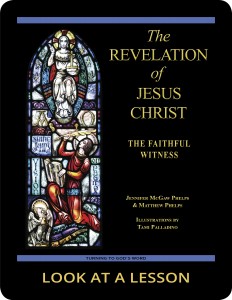bowels
 The Letter of Paul to the Colossians 3:12 (NABRE) describes a number of traits Christians should endeavor to adopt in terms of getting dressed in them. Paul describes the process this way: “Put on, as God’s chosen ones, holy and beloved, heartfelt compassion, kindness, humility, gentleness, and patience.” In many translations, the text is rendered somewhat freely to appeal better to modern sensibility, but in the process an interesting thought about the text is lost.
The Letter of Paul to the Colossians 3:12 (NABRE) describes a number of traits Christians should endeavor to adopt in terms of getting dressed in them. Paul describes the process this way: “Put on, as God’s chosen ones, holy and beloved, heartfelt compassion, kindness, humility, gentleness, and patience.” In many translations, the text is rendered somewhat freely to appeal better to modern sensibility, but in the process an interesting thought about the text is lost.
In the Greek, the things we’re urged to put on are the σπλάγχνα (splanchna), which is literally the bowels or guts of compassion, kindness, etc. It can be fairly difficult to relate to such a gross image. The extremely interesting thing that gets lost in the more mild translations is the contrast between internal and external. The theme of getting dressed suggests an outward appearance that is separate from who a person really is. At first glance, this looks like a fake-it-till-you-make-it sort of passage. With the added element of these new attitudes being visceral and internal, the suggested change seems to be at the deepest level of who a person is. While the adoption of these traits will change our appearance, the change needs to be much deeper at the heart of who we are.
This Christmas season consider the extent to which you’ve prepared for Christ during the season of Advent. To what extent have you been deeply changed by your faith?
you also may like our study of the book of Revelation
 The Revelation of Jesus Christ: The Faithful Witness, a 23-lesson Catholic Bible study with an imprimatur, examines ways in which our traditional Christian view of heaven is built on Hebrew apocalyptic visions recorded in the Old Testament. This recently revised study includes maps and additional commentary and takes a close look at the role of the prophets in present-day Christianity. Illustrations by Tami Palladino depict the often-misunderstood images in the book of Revelation. Click on the book’s cover to view a sample lesson.
The Revelation of Jesus Christ: The Faithful Witness, a 23-lesson Catholic Bible study with an imprimatur, examines ways in which our traditional Christian view of heaven is built on Hebrew apocalyptic visions recorded in the Old Testament. This recently revised study includes maps and additional commentary and takes a close look at the role of the prophets in present-day Christianity. Illustrations by Tami Palladino depict the often-misunderstood images in the book of Revelation. Click on the book’s cover to view a sample lesson.
 Click on the picture of the statue of Moses with horns (above) to learn more about Lost in Translation. A new entry is archived each Monday. Contact us to receive Lost in Translation by email every week. You may use any of the contact links on our website to ask Matthew a question.
Click on the picture of the statue of Moses with horns (above) to learn more about Lost in Translation. A new entry is archived each Monday. Contact us to receive Lost in Translation by email every week. You may use any of the contact links on our website to ask Matthew a question.
